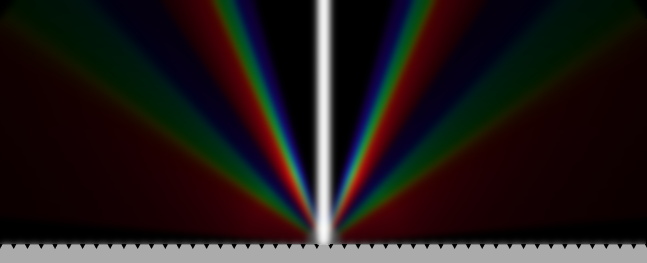Structural colors
So-called structural colors are the results of interference of the light reflected by an object. For that, the object must be structured quasi-periodically along one or two directions parallel to its surface, with a period of the order of 1 µm. The structuring can be achieved by geometrical texture (corrugation) of the surface or by alternating different materials. Structural colors can be found in the biological world (wings of some butterflies, for instance) and, more rarely, in minerals (opals, for instance).
The color and its characteristics depend on the direction under which the object is looked at. An extreme example is a diffraction grating, such as used in a visible spectrometer to disperse light. This optical device can be viewed as a reflecting surface on which a large series of equidistant and parallel grooves have been produced, e.g. mechanically. Under normal incidence, the component of wavelength λ of polychromatic light is reflected back at specific angles given by Bragg's law sin(θ) = nλ/p where p is the period of the grating, n being an integer number (order of diffraction). The grating will acquire a given color when looked at under a diffraction angle. The diffraction of light is possible only for λ < p.
 |
Illustration of the diffraction of natural light falling at normal incidence on a reflecting grating with p = 1.5 μm. |